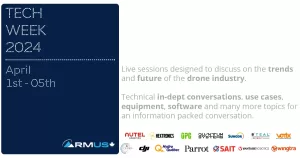Case
Considering a challenging security landscape, a prominent Canadian telecommunications provider is grappling with safeguarding specific assets against potential risks. The prevailing skepticism surrounding certain telecom technologies has heightened apprehensions regarding a surge in sabotage incidents, particularly targeting remote sites that are inherently susceptible. In response to this pressing need, the company is actively seeking innovative security solutions that offer enhanced effectiveness and flexibility.
Goal
Utilize drone technology to enable real-time monitoring of a remote site and surrounding areas, and reduce response time to security incidents.
Plan
Employ a drone dock system onsite and manage it remotely over the internet with a user-friendly control interface. Plan autonomous drone missions to be carried out according to a schedule and record video and photos of the site for review later. Execute pre-planned missions on-demand and monitor live video feed from the drone. Launch the drone on-demand, control it and monitor video in real time.
- Equipment: Matrice 30T housed inside the DJI Dock
- Control Interface: Flight Hub2 Software
- Comms medium for observation and control: LTE
- Location: Rural Alberta
- Duration: Four days
Result
User experience
The control interface is intuitive. The mission planning tool is more effective than expected because its two-dimensional map interface is supplemented with a first-person view preview tool, which shows a 3D representation of what the drone’s perspective will be. The user has a wide range of options to plan how the drone will maneuver and what actions it will take at specific locations. Planned missions are stored in a library and accessed from a scheduling tool where they form a daily action plan for the drone dock. Scheduling a mission can be done in under a minute.
Effectiveness
Up to ten flights per day were conducted. The average time elapsed from the assignment of a mission in the control interface and its execution by the drone dock was about 90 seconds. Consecutive missions were conducted less than three minutes apart. Perimeter patrol missions planned to survey the one-acre site thoroughly from all sides had a duration of four minutes. Missions planned to check the front gate and scan the 750m laneway had a duration of seven minutes.
Environmental tolerance
Temperatures ranged from -6°C to 11°C. Moderate to heavy snowfall was observed during active drone operations. Wind speeds up to 51km/h were recorded at the site of the dock during active operations. These conditions had no effect on operations. The drone’s self-heating batteries mitigate the effects of cold weather, with the manufacturer reporting it can operate at -20°C. The drone also has a high wind tolerance, and its takeoff and landing sequence seem optimized to reduce the risk of collision with the dock when wind speed is high.
Reliability
When the operator’s control interface and drone dock have an internet connection, the system works as intended and is immediately responsive to inputs. The control interface provides real-time status information on the dock and drone, which should enable remote troubleshooting when possible.
Conclusion
Other insights gained
- The usability of the system makes it a viable way of monitoring security incidents onsite in real time. Subjects can be monitored wherever they go. Faces, licence plates, and other identifying features can be recorded regardless of where they are onsite or how they are oriented. The drone is likely also to be a powerful deterrent and can be fitted with a spotlight and speaker.
- The system is likely to be employed secondarily as a tool for spot inspections and verifications after incidents, weather events, contractor work or at any other time.
- There is likely to be value in the record of photo and video data collected onsite over time.
Proposed future improvements
- The user experience is such that a single operator could easily manage several drone dock systems located at different sites. This will be done from a centralized workstation with additional screens and redundant comms.
- A spotlight and speaker system will be added to the drone to enhance its security capabilities and deterrent effect.
- The dock will be installed in a more permanent, secure and inconspicuous location such as the roof of the shelter onsite.
The concept of employing drone dock systems to enhance security at remote sites is sound. Benefits beyond the scope of the test case were noted for site security and for asset management generally. The user experience and capabilities of the system in this configuration were satisfactory in all respects. Future improvements are possible, but this solution is ready for broad deployment under conditions corresponding to this test.



